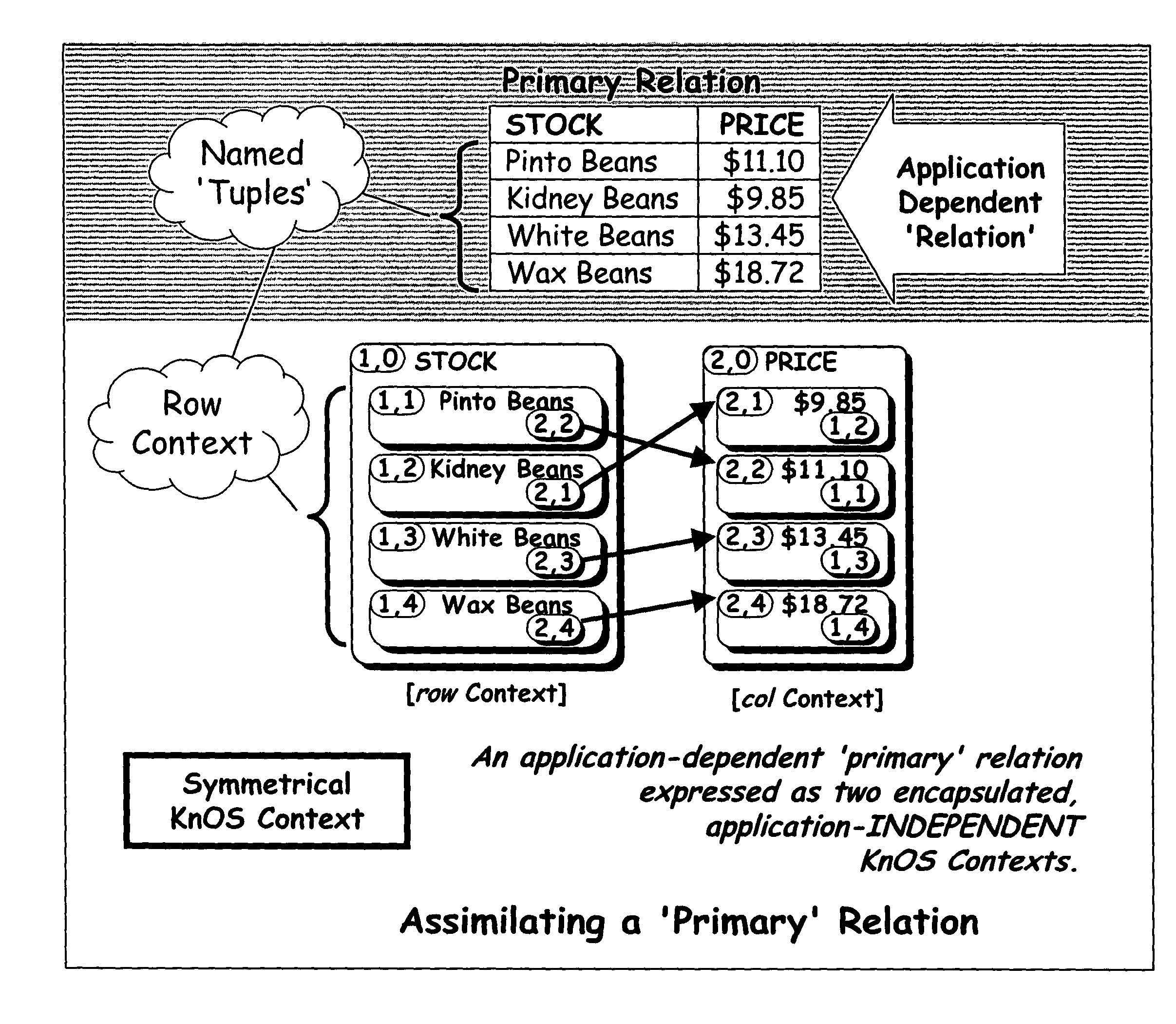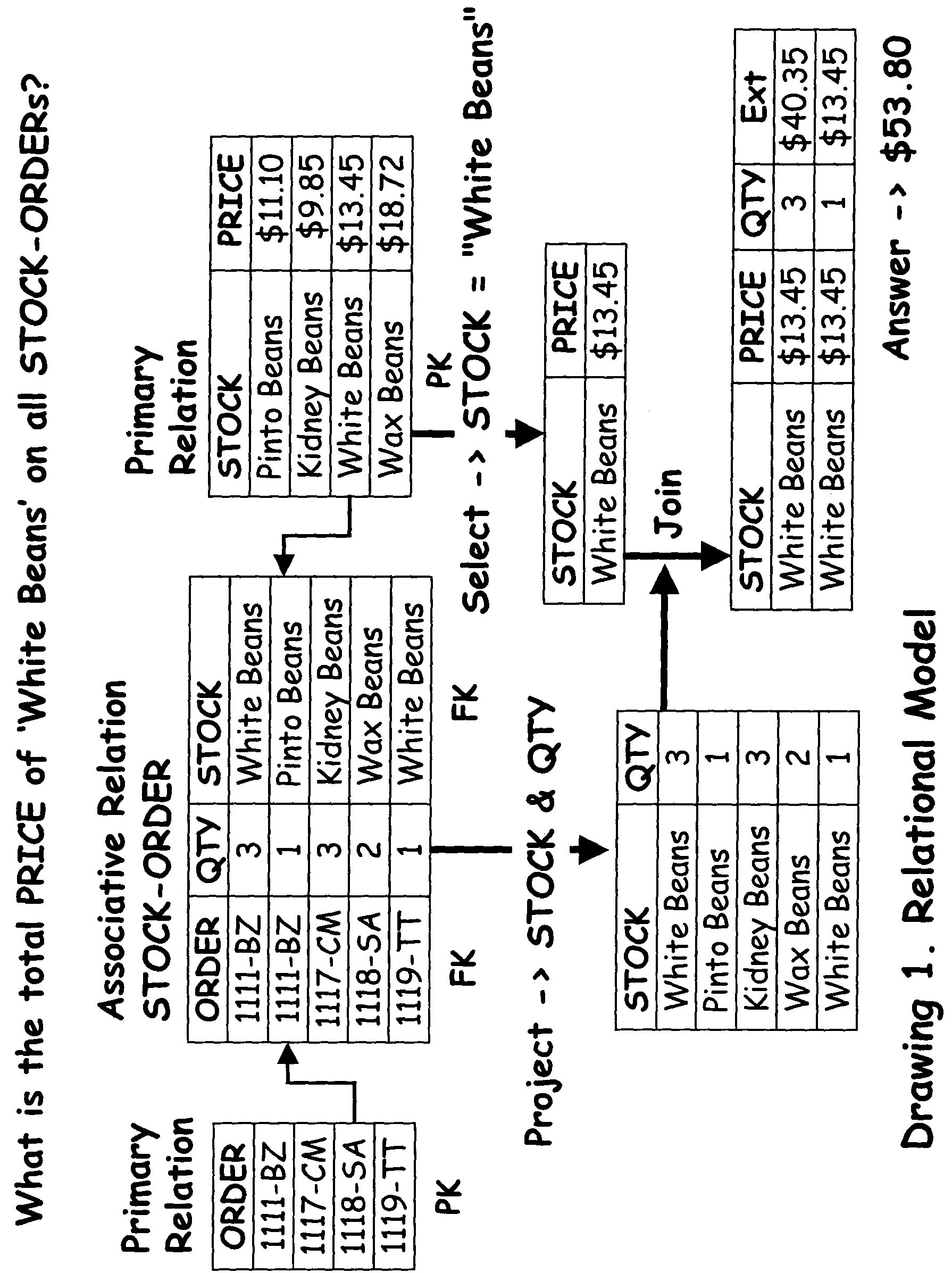There was a massive level of
data redundancy in the flat files, which made information very difficult to update completely and often resulted in
software applications giving wrong answers or taking inappropriate actions.
Flat file computing also meant that there was no enterprise view of data across the spectrum of departmental information.
The flat file approach to
data processing was extremely error-prone and costly, and provided no strategic view of the enterprise.
Because enterprise data often has rich structural complexity that is almost impossible to capture in flat files (i.e., all structural complexity is flattened into two dimensions and hence the term ‘flat’), the first attempts at independent DBMSs used smaller records of largely non-redundant information with either hierarchical or networked ‘pointers’.
For these and other reasons, hierarchical and network DBMSs met with limited commercial success.
Though elegant and universal, Ted Codd's approach was not largely adopted through the early 1980s because mainframe computers of that day were incapable of supporting the input / output intensity required by a relational DBMS (RDBMS).
While there are hundreds of thousands of business-oriented
software applications today that still operate with flat files and hierarchical or network-based DBMSs, these methods of managing enterprise databases are considered outdated.
Despite near-universal acceptance as a
database management mechanism, there are huge problems with the
relational model.
The most significant is the lack of relationship definition.
None have reached the commercial marketplace, partly because they are more difficult to implement just the required optimizers are difficult propositions), and partly because they are typically more difficult to use in real business settings.
Also, the more
semantic context a DBMS captures, the more difficult it is to make corrections and changes.
Though such changes may have less
impact than when the
semantics are managed by the functional application, efficient support for
semantics in a DBMS is very difficult.
Another notion as to why semantic data models have not done better in the commercial marketplace is that
semantic context does not do much to improve performance (and may actually retard performance).
Given that RDBMSs are challenged for performance, it is probably not surprising that more semantic context has not found its way into value-based DBMSs.
Because the relational model's application-dependent data structures (ADDS) are unique, complex and fragile (resistant to change), the ADDS feature of the relational model causes many severe problems in the software applications.
ADDS makes the distribution and maintenance of commercial off-the-shelf (COTS)
application software a very difficult business proposition.
Because each application is inherently unique (by virtue of the ADDS uniqueness), it is difficult to achieve the economy of scale necessary to sustain a business distributing COTS applications.
If the
data model is made more flexible (complex) to accommodate a range of variation in the underlying business model (such as varying operational practices within an industry), the artifacts of this flexibility will cause the
application software's complexity to increase, proportionally, to
handle the increased operational flexibility (because
SQL is tightly bonded to the
data structure).
The
relational equation—flexibility implies unnecessary complexity—is inescapable with respect to any given implementation of the COTS software.
Relational applications that are built on such flexible relational model data structures often suffer operational difficulties and failures that are not caused by any aspect of the particular enterprise's business model, but rather are caused by unneeded and unused artifacts of flexibility (included in the COTS application to accommodate competitors' business models).
In addition, identifying, understanding and ignoring the unused artifacts of induced flexibility in the application and the
data model necessarily consumes the most talented human IT resources of the enterprise, as well as other institutional resources such as data storage,
processing, training and
documentation.
As the COTS
software vendor's customer base continues to grow, the need for flexibility and attendant complexity increases until the existing customer base begins to reject the COTS application.
This often results in the failure of the COTS application vendor.
It is fair to state that the ADDS inherent in the relational model are the
root cause of many if not most commercial failures of COTS
application software vendors.
[i.e., a) commercial viability requires vast flexibility, b) because of ADDS, vast flexibility implies unnecessary complexity (with respect to any given customer), and c) ever increasing and unnecessary complexity causes customers to stop using the application.]
The complexity is so extreme that it is often necessary to use semantic data models to first describe the
data model in abstract terms.
The most sensitive problems in this area are involved with changes in the single PK attributes of the primary relations.
This implies that minor changes can be very costly to make, and necessary changes are often avoided with costly workarounds (because the cost to correct the problem in the application is even greater).
As a direct result of ADDS and FK migration, relational applications typically have years of unapplied application change requests in backlog.
This is why COTS enterprise applications based on the relational model typically have a low degree of fit to the customer's needs.
On the typical
enterprise application, RDBMSs are faced with a physical reorganization problem relative to the basic tabular organization of information.
The problem, which is attendant to the ADDS, is that relational information is stored in a highly-organized form which should be at least clustered if not physically contiguous on the storage medium.
When rows are deleted and inserted, this clustered physical arrangement on disk cannot be maintained.
Over time, the RDBMS will gradually lose much of its
throughput efficiency because of the relational model's reliance on structured data storage.
The problem of structural degradation is inherent in relational
data management.
Reliance on complex physical data structures is the problem.
All complex physical data storage structures degrade over time.
When the DBMS relies on the physical structures for organization,
processing efficiency degrades in proportion to the
erosion in the physical structures.
In practice, it is one of the great weaknesses of the model.
The join operation is extremely inefficient and the greater the degree of normalization the more joins must be performed.
De-normalizing the structures of the relational model provides for operational efficiency but leads to update anomalies and significant redundant data that then must be plied to support operations.
All of this complexity must be added to the application.
The security requirements of enterprise applications are difficult to predict.
There are no practical ways to implement security labels within the cells of two-dimensional table structures (certainly none that are efficient).
If the security dimension is collapsed (folded) onto the two-dimensional table, as is required by the relational model, the result is not good.
This approach is enormously inefficient.
The more dimensions of complexity that exist in the application (such as security) the more difficult it is to implement the application in a two-dimensional relational depiction.
Because of ADDS, the ability to read the information in a relational repository is effectively limited to the application for which the repository was erected.
For example, most relational software applications do not eliminate unneeded attributes from their relations.
Over time, the persistence of unneeded
data structure and attribution in a relational implementation can cause additional problems in complexity, storage space, and operations.
The relational model has no real mechanism for modeling complex interrelationships among data.
When large and very large databases are implemented with the relational model, the contention between query and update transactions can cause severe performance difficulties.
However, enterprises also need to query the
database, and many of the required queries are elaborate and / or complex.
Because these secondary indices must be maintained during updates, they add substantial overhead to the update transactions.
Given that joining tables can be time-consuming and resource-intensive, complex queries also benefit from reducing the number of physical tables that must be accessed.
Though most OLTP sites do de-normalize the databases somewhat, to improve performance, they typically do not do nearly enough de-normalization to support complex queries.
Moreover, as the amount of de-normalization and secondary indices increases, OLTP response times get appreciably worse.
It is simply that the DBMS industry views the separation as a necessary evil.
As mentioned above, the relational model provides no mechanism for modeling the complex interrelationships either within or among its relations.
If the inclusion of semantic context makes a DBMS less efficient or the
database / application less maintainable, it is a weak candidate for addition to a DBMS.
Unfortunately, semantic data models do both (less efficient and less maintainable).
Decreased semantic overloading of relationship types.
Semantic data models have been widely used in schema design but have not experienced much commercial success as a means of implementing computing solutions.
OO has suffered from a lack of success because many enterprise data models do not sustain a broad-based crisp boundary condition (the core requisite of OO).
Many semantic data models have a narrow focus of interest, which is not well suited to commercialization as an implementation model.
Many semantic data models are too complex to
gain wide-scale usage.
There is no body of
expert opinion today to suggest that semantic data models will ever replace
record-based data models (relational, network, hierarchical) for implementation.
 Login to View More
Login to View More  Login to View More
Login to View More 


